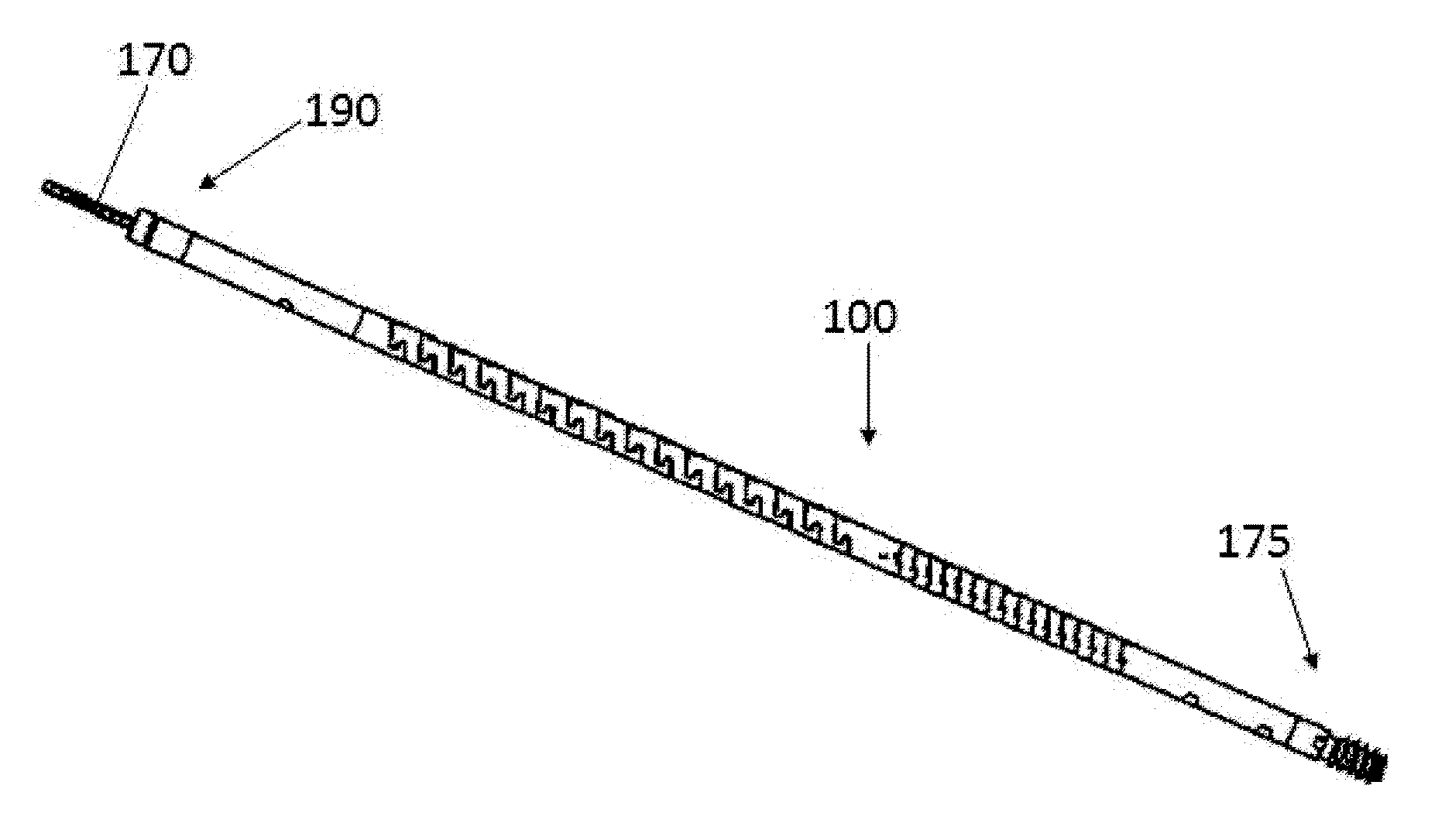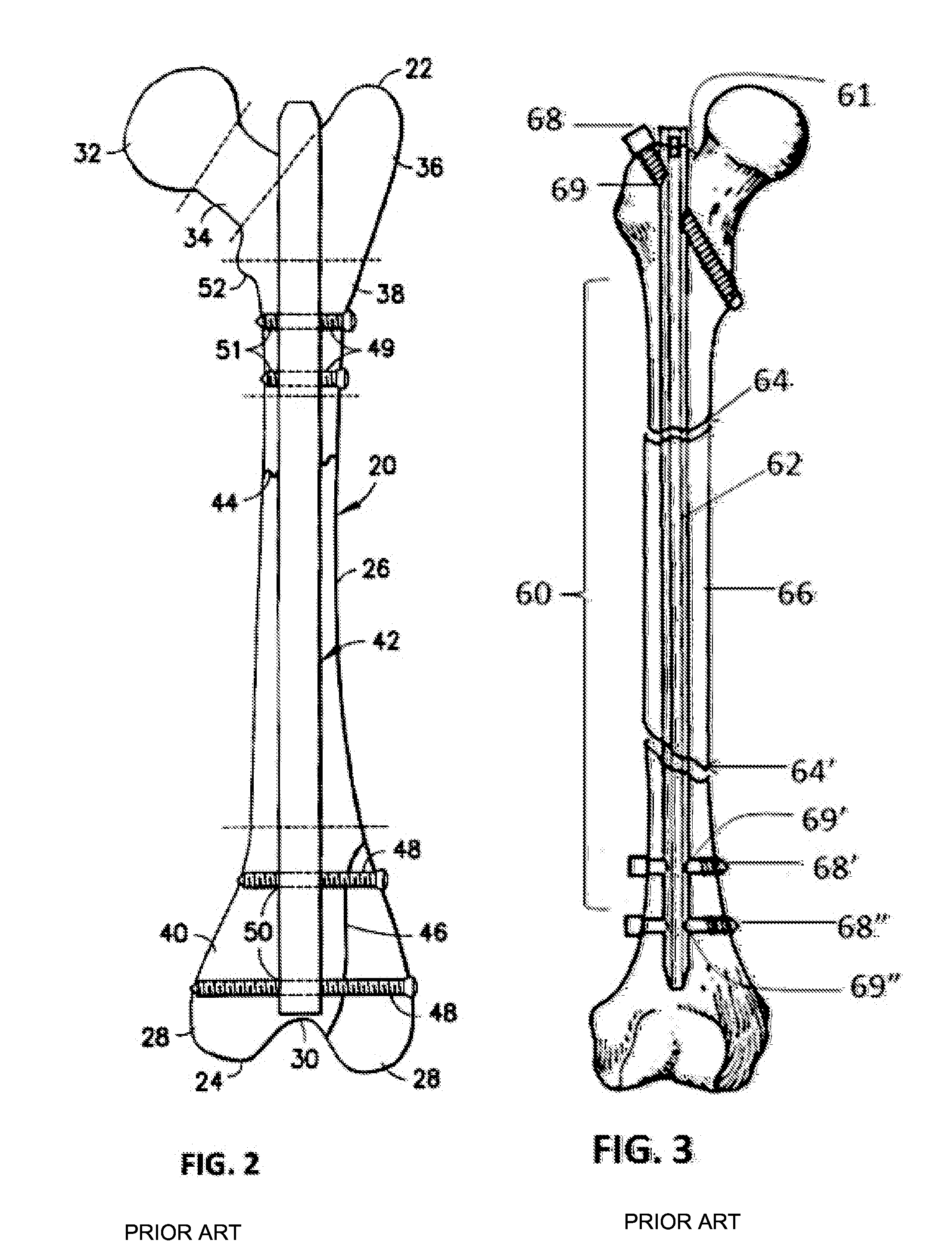Flexible intramedullary nail
a flexible, intramedullary technology, applied in the direction of ligaments, osteosynthesis devices, muscles, etc., can solve the problems of adding bone fractures, increasing the erosion of the cortex or insertion difficulty, and preventing unwanted penetration
- Summary
- Abstract
- Description
- Claims
- Application Information
AI Technical Summary
Benefits of technology
Problems solved by technology
Method used
Image
Examples
Embodiment Construction
[0072]For the purposes herein the term “intramedullary rod”, also known as an “intramedullary nail” (IM nail), means a metal rod forced into the medullary cavity of a bone to align and stabilize fractures. IM rods are primarily inserted into the bone marrow canal in the center of the long bones of the extremities (e.g. femur, tibia, fibula, humerus, ulna and radius).
[0073]For the purposes herein the terms “slit” and “slot” are used interchangeably, consistent with their definitions, as follows:[0074]slot n. 1. A narrow opening; a groove or slit: a slot for coins in a vending machine; a mail slot.[0075]2. A gap between a main and an auxiliary airfoil to provide space for airflow and facilitate the smooth passage of air over the wing.
[0076]For the purposes herein the term pitch as used herein is defined as:[0077]pitch-n.1. The distance traveled by a machine screw in one revolution.[0078]The distance between two corresponding points on adjacent screw threads or gear teeth. (American He...
PUM
 Login to View More
Login to View More Abstract
Description
Claims
Application Information
 Login to View More
Login to View More - R&D
- Intellectual Property
- Life Sciences
- Materials
- Tech Scout
- Unparalleled Data Quality
- Higher Quality Content
- 60% Fewer Hallucinations
Browse by: Latest US Patents, China's latest patents, Technical Efficacy Thesaurus, Application Domain, Technology Topic, Popular Technical Reports.
© 2025 PatSnap. All rights reserved.Legal|Privacy policy|Modern Slavery Act Transparency Statement|Sitemap|About US| Contact US: help@patsnap.com



